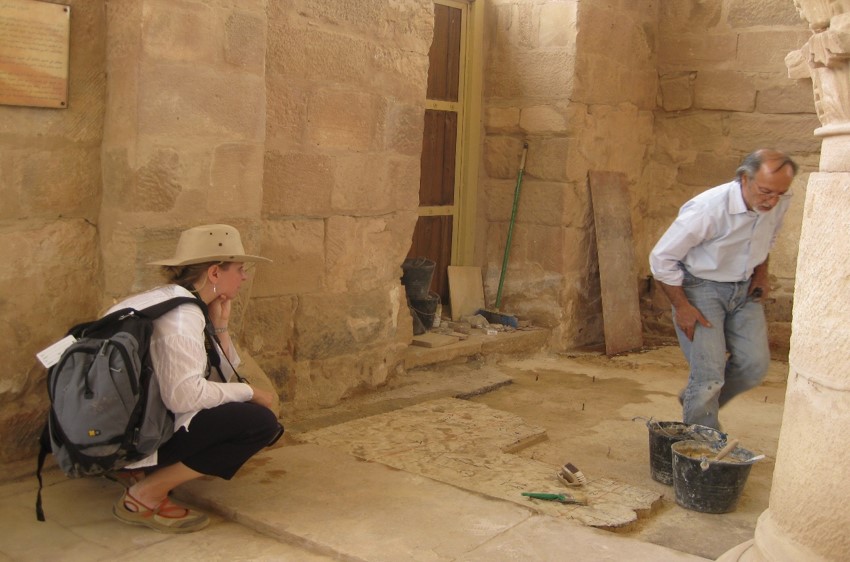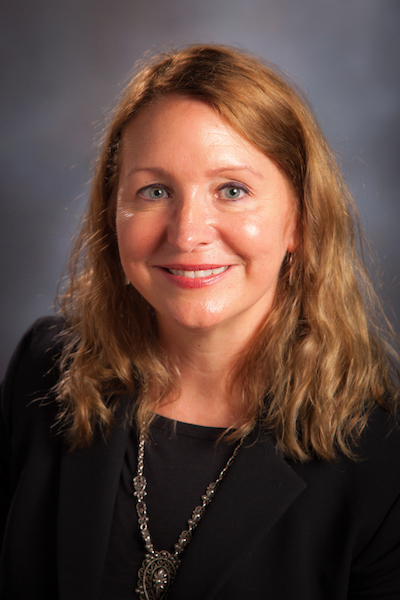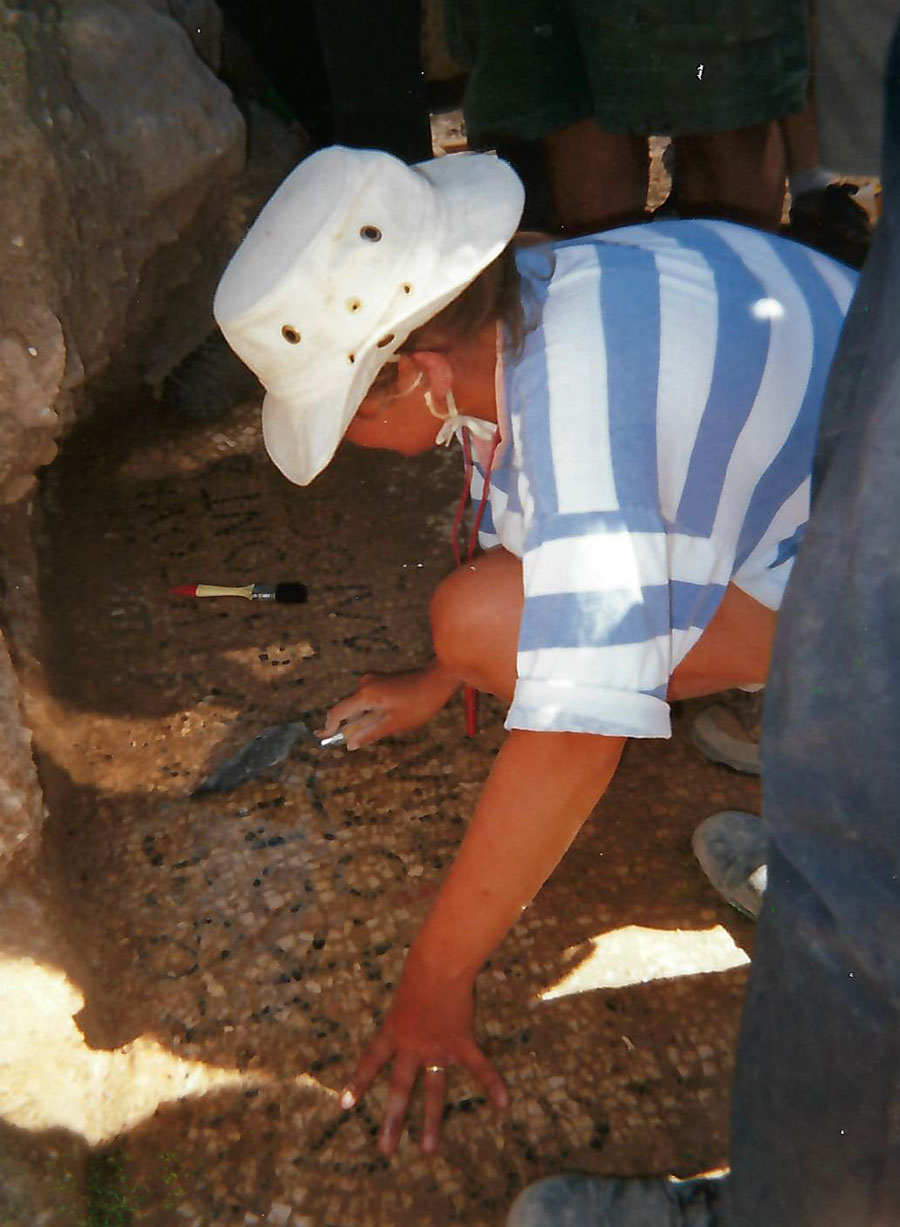
Northwest faculty member Dr. Karen Britt supervises the conservation of mosaics in a 6th-century Byzantine church at Petra, Jordan. The work of Britt and her team recently was featured in National Geographic. (Submitted photo)
Dr. Karen Britt, an assistant professor of art history at Northwest Missouri State University, recently was featured in an issue of National Geographic’s “100 Wonders of the World” for her work with the Huqoq mosaics.

Dr. Karen Britt
“I was really surprised,” Britt said of the publication. “I was stunned then overjoyed and excited. It’s all the more extraordinary because some of the other sites that are in that article or on that list of 100 are places like Machu Pichu and the pyramids in Egypt, and we’re not even finished excavating.”
Carved using hand tools, mosaics are composed of miniature cubes, called tesserae, made of colored limestone and marble fitted together to pave floors or decorate the walls and ceilings of buildings.
Britt, who joined the Northwest faculty in 2019, was invited to join the Huqoq Excavation Project team in Israel as the mosaics specialist in 2012 by director and friend Jodi Magness. The team did not expect to find mosaics in the late fourth-century synagogue in lower eastern Galilee, Israel, so their discovery and the variety of mosaics add to their rarity.
“There are people who spend whole careers and never have the opportunity to work on material that is this exciting, because we have scenes in the mosaics in this synagogue that don’t exist in any other synagogue of this date anywhere,” Britt said. “It’s the extraordinary nature of the mosaics, I believe, that led to the mosaics at Huqoq being included in National Geographic’s 100 Archaeological Wonders of the World.”
Many Hebrew Bible and Old Testament episodes are portrayed through various mosaics. Scenes of Jonah, Samson and Noah are depicted with ones of the Red Sea, but the scenes appear differently than in the West. A zodiac calendar fills the center of the synagogue while the Elephant Mosaic and commemorative panel add to the rarity and curiosity surrounding the Huqoq mosaics.

Britt excavates a mosaic inscription in a 6th-century Byzantine church at Yattir, Israel. (Submitted photo)
Britt works in the field during the summer months. She works closely with excavators and conservators to remove multiple feet of debris and ensure the mosaic is in stable condition before documenting the floor. The five-week field season involves college educators and students. Britt documents the mosaics by taking measurements and performs tesserae density readings to calculate the number of cubes per square decimeter, which determines the quality of the mosaics.
Britt begins her field days at the site at 4:30 a.m. By 5 a.m., the sun is rising, and the team can begin digging. During the day-long excavation process, she moves around the site and contemplates how the mosaics may relate to the space itself while sometimes digging and running wheelbarrows of dirt. From late May to early July, she helps uncover the mosaics, and the team explores a different area of the site with each new season.
Once the field season is finished, Britt begins the publication process alongside late-antique historian and friend Ra’anan Boustan of Princeton University. The duo has been collaborating since 2015 to publish their work in multiple languages in both scholarly and popular venues, including National Geographic.
“Archaeology is like this giant jigsaw puzzle in which you use everything that you have at your disposal to try to put together the past and understand what the conditions were in which people lived,” Britt said. “Buildings like this help us reconstruct what their faith was and what their interests religiously were and, in some cases, practices because sometimes you get a sense of the way that people moved through space based on the layout of the mosaic program.”
Britt’s involvement with the Huqoq Excavation Project also translates to her classroom. She stresses to her students that “context matters” while sharing stories in her introductory and upper-division art history courses. The archaeological work allows her and her students to reconstruct the past by using all available evidence such as mosaics.
“We’re not doing archaeology in the classroom,” Britt said. “But when you approach it that way, as a way of discovering the past and also informing the present, I think it’s much more successful because the students are invested more deeply.”
Her work has taken her to Turkey, Syria, Lebanon, Israel, the Palestinian Authority, Jordan and Egypt. International involvement on projects not only brings attention to the University but faculty, and students who engage in international travel return with cultural knowledge from engaging with diverse groups of people.
“This recognition, for us as a team, underscores the rare quality of the mosaics and broader importance of the project,” Britt said.
For more information about the Huqoq Excavation Project, visit huqoq.org.